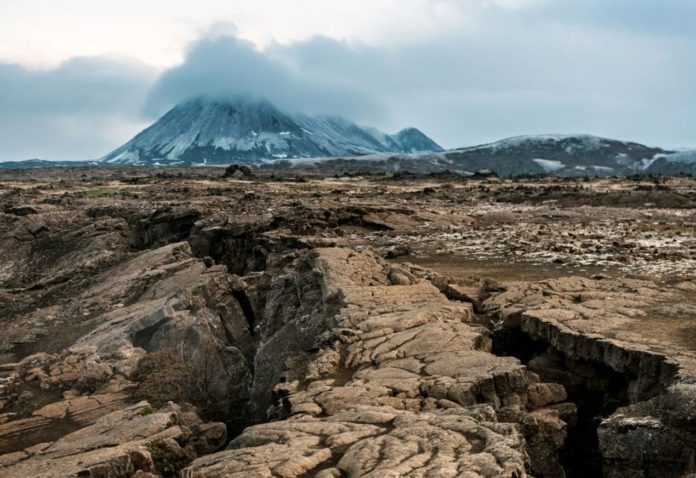Researchers from Arizona and Michigan universities have detected the world’s deepest earthquake, 751 km below the surface. With the immense pressure produced by the top strata, rocks prefer to flex and deform rather than break with a quick release of energy.
A team of researchers from the universities of Arizona and Michigan has managed to capture the deepest earthquake ever detected at a staggering depth of 467 miles (751 kilometers).
Seismologists expected earthquakes to be impossible in the lower mantle at this depth. Rocks are more prone to bend and deform under tremendous pressures than to break with a burst of energy.
The quake, which was first published in the journal Geophysical Research Letters in June, was a modest aftershock following a 7.9-magnitude quake that struck the Bonin Islands off the coast of Japan in 2015.
The quake was discovered by researchers led by University of Arizona seismologist Eric Kiser using Japan’s Hi-net array of seismic stations. According to John Vidale, a seismologist at the University of Southern California who was not involved in the study, the array is the most powerful technology for detecting earthquakes currently in use.
A headache
Scientists are baffled by the discovery, because the vast majority of earthquakes occur at shallow depths, in the earth’s crust or upper mantle, at a maximum of 100 km below the surface. The rocks in the crust, which has an average thickness of roughly 20 km, are cold and brittle, and when stressed, they break, releasing energy. Lower in the mantle, the rocks are more hotter and under much higher pressure, making them less prone to fracture. However, earthquakes can still occur when massive pressure drives water held in the pores of the rocks out, causing the rock to become more brittle and break, resulting in tremors.
This mechanism can explain earthquakes that occur up to 400 km deep, even in the upper mantle. The reason why they can happen even farther down remains a mystery, despite the fact that earthquakes had already been recorded in the lower mantle, to depths of more than 600 km, prior to this very deep detection. However, at that level, all of the water should have been released, and the pores in the rocks that contain it should have closed, preventing the fluids from triggering an earthquake. So, where did it come from?
Minerals under pressure
The trouble with earthquakes deeper than 400 kilometers has to do with how minerals behave under pressure. Much of the planet’s mantle is composed of olivine, a green and lustrous mineral. The tremendous pressures lead the olivine atoms to rearrange into a new structure, a bluish mineral called wadsleyite, roughly 400 kilometers below the surface. Another 100 kilometers down, the wadsleyite reorganizes into ringwoodite. Finally, at a depth of approximately 680 km, ringwoodite decomposes into two minerals, bridgmanite and periclase. Geoscientists cannot, of course, investigate at these depths directly, but they may employ technology to duplicate severe pressures in their laboratories and simulate these changes there. Because seismic waves pass differently through different mineral stages, researchers can find traces of these changes by observing earthquake vibrations.
The final transition mentioned marks the end of the upper mantle and the start of the lower mantle. The most significant aspect of these mineral phases is not their names, but how each one behaves. It’s comparable to what happens with graphite and diamonds. Both are composed of carbon, but in distinct configurations. The stable form on the Earth’s surface is graphite, while the stable form deep under the mantle is diamond. And they have very distinct properties: graphite is smooth, gray, and slick, whereas diamonds are exceedingly hard and transparent. Similarly, as olivine evolves into its greatest pressure phases, it is more likely to bend and less prone to break in an earthquake-causing manner.
However, the new earthquake, which was discovered at a depth of 751 km, is considerably below that transition zone. It is, in fact, positioned directly in the lower mantle. And it’s unclear how it could have happened. One hypothesis is that the boundary between the upper and lower mantles is not located exactly where seismologists believe it is. However, keep in mind that the earthquake happened in a subduction zone, where a slab of oceanic crust is submerged beneath a slab of continental crust. As a result, the site is geologically complex.
According to the study’s authors, the subducting slab of crust may have settled firmly enough into the lower mantle to subject the rocks below to great stress, generating enough heat and pressure to produce a very unique rupture.
Although it is plausible that because the sinking continental crust is substantially cooler than the mantle, the minerals have not attained sufficient temperature to complete the phase transformations that are expected to occur at given pressures.
Whatever triggered this earthquake, specialists believe it will be difficult for something similar to happen again. As a result, it is most likely an uncommon case. New research in this and other subduction zones may yield a definitive solution.
Image Credit: iStock
You were reading: Scientists detect an ‘impossible’ earthquake at a depth of 751 km
